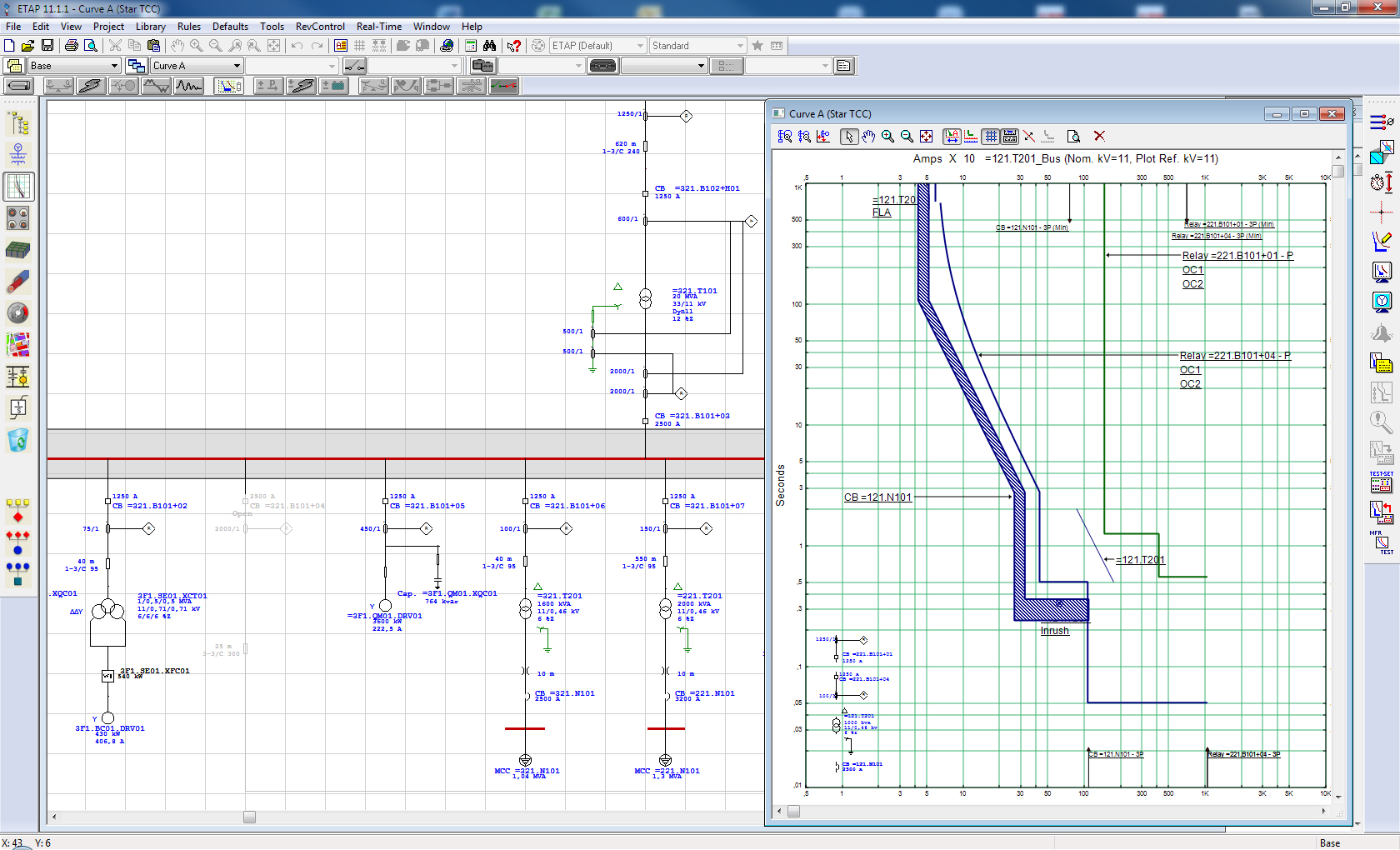Network evaluation / network analysis
Based on your requirements, we use our extensive software and analysis tools to assess your medium- and low-voltage networks. The following evaluations/analyses are possible here:
Short circuit analysis
Our short circuit analysis software analyses the impact of faults in electrical networks: Tripolar short circuit, bipolar short circuit with/without earth contact, and unipolar earth (short) circuit. The software calculates the sum of the short circuits and the contributions of individual motors, generators and supply connections in the network. The switching capacity is inspected in accordance with the latest versions of the relevant body of standards.
Protective equipment coordination / selectivity analysis
With protective equipment coordination and selectivity analysis, static and dynamic designs can be implemented and tested. Using clear and simple input tools, we are able to analyse even complex network structures accurately and efficiently.
Load flow analysis
Load flow analysis calculates the busbar voltages and active power coefficients (cos phi) on the junctions, and currents and power flows for the entire electrical network. We take into consideration connectible voltage-regulated and -unregulated power sources with multiple power networks and generator connections.

Motor start / motor acceleration analysis
During the start phase, the motor appears in the network as a small impedance on a busbar. The high start-up current generated during this start phase causes a voltage drop in the network that can lead to faults in other consumers. However, as the acceleration torque of the motor depends on its terminal voltage, the starting motor might not reach its nominal speed if this voltage is too low. A motor start analysis is required to determine this behaviour in the network. The purpose of this analysis is twofold: firstly, it determines whether or not the motor can be successfully started at all under the predominant operating conditions; and, secondly, whether starting the motor can seriously affect the operation of the other consumers in the network.
Harmonics analysis
Because of the broad distribution and constantly growing number of electronic power devices, e.g. variable-speed drives, uninterrupted power supplies (UPS), static power converters etc., the quality of voltage and current for the power supply has suffered significantly in many areas. In such areas, there are often other components in the distorted voltage and current curves besides the basic frequency. This generally involves whole multiples of the basic frequency, called harmonics. Besides electronic devices, further non-linear loads or devices can also be responsible for the degradation in quality, e.g. saturated transformers, arc furnaces, fluorescent lighting and cycloconverters.
The presence of harmonics in a power supply system can entail a wide range of problems, e.g. device overheating, degradation of performance factors, degradation in the performance of electrical devices, malfunctioning of protective relays, interference with communication devices and occasionally resonance that can cause dielectric outages and other serious damage. Even worse, harmonic flows that occur in part of the network can get into the network itself and spread to other areas, leading to current and voltage distortion throughout the network. Because of the constantly growing number of electronic devices and equipment in power supply systems, this phenomenon has become an alarming quality issue.
Harmonics phenomena can be modelled and analysed with the aid of computer simulations. Our harmonics analysis enables accurate modelling of various system components and devices including their frequency behaviour, non-linearity and other characteristics in the presence of sources of harmonics.
With our harmonics analysis, existing and potential supply quality and safety issues connected with harmonics can be easily discovered.

